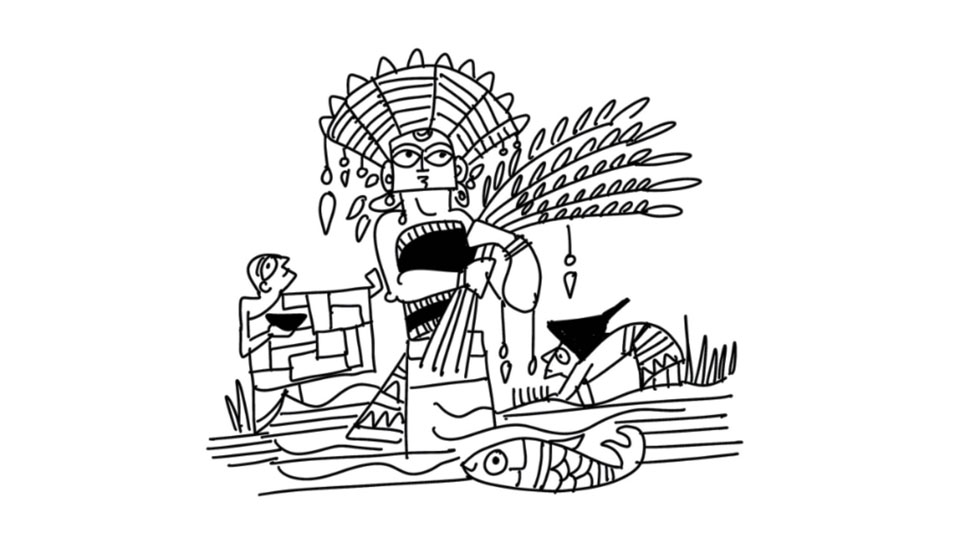By Dr. Devdutt Pattanaik – Author, Speaker, Illustrator, Mythologist
The oldest Indian mythology of rice can be found among the Bonda tribal people, who live in Odisha, who are linked to the Munda and Austroasiatic communities who entered India from the Southeast, and brought rice growing technology with them over 4,000 years ago. The Bonda say that in ancient times, rice could fly and could eat humans. But they lost a memory game — humans could remember all names of rice, rice could not remember all names of humans. And so, rice became the food of humans. The great hero of the Bonda people, Bhimay, cut the wings of rice, brought them to Earth, and consumed them. This probably is one of the oldest myths dealing with rice cultivation.
In another Bonda story, grains were rotting on Earth. So, the Mahaprabhu, or the great god of the Bonda tribe, tore his loincloth and tied the rice in it. He then placed it on the head of the peacock, which explains the crown on the head of the peacock.
Rice mythology is not found in Vedic literature. But the Buddhist creation myth states that rice existed in the purest of realms. But desire caused it to attach itself to the ground, develop husks and be tough to digest. This is why we have to labour so much to get rice. Buddha loved rice so much that he told his monks to wear robes stitched with square patterns to remind all of the value of well organised irrigated paddy fields.
Rice myths are abundant in Southeast Asia. In Indonesia, the king of gods Batara Guru told all the gods to build a palace for him. Anantha Shesha, the serpent who holds the earth, did not have the hands and feet to help in building the palace.
So instead he offered one of his jewelled eggs to Batara Guru. From this jewelled egg emerged a beautiful woman called Devi Sri. All the gods fell in love with her. To prevent a quarrel amongst the gods, the goddess was killed. She was buried under the earth. Then, from different parts of a body different plants emerged that served as cash crops, like rice, betel and bamboo.
In Thailand, the rice goddess was cursed by the wives of the farmers as their husbands paid more attention to her. Rice goddess felt bad and ran away into the darkness with her best friend, the freshwater fish, until the people apologised and agreed to venerate her.
The idea of the freshwater fish as the best friend of rice is a recurring motif in rice mythology. In the Manipur region, the Mietei people also speak of the rice goddess who has many lovers, but who breaks their heart by eventually going away. Her worst enemy is the deer who has been cursed that if it eats rice, it loses its teeth. Her best friend is a fish who helped her escape from those who wanted to harm her.
In Laos, we find the story of a farmer who, desperate for food, trapped a golden fish. To save the golden fish, the king of fishes gave rice to humans. Later when a king locked the rice up in a room, the people started to starve again. A hermit found the rice goddess and cut her into many pieces to create various varieties of rice such as black rice, white rice, hard rice, glutinous rice. He created so many varieties that the king could not control them all.








Recent Comments